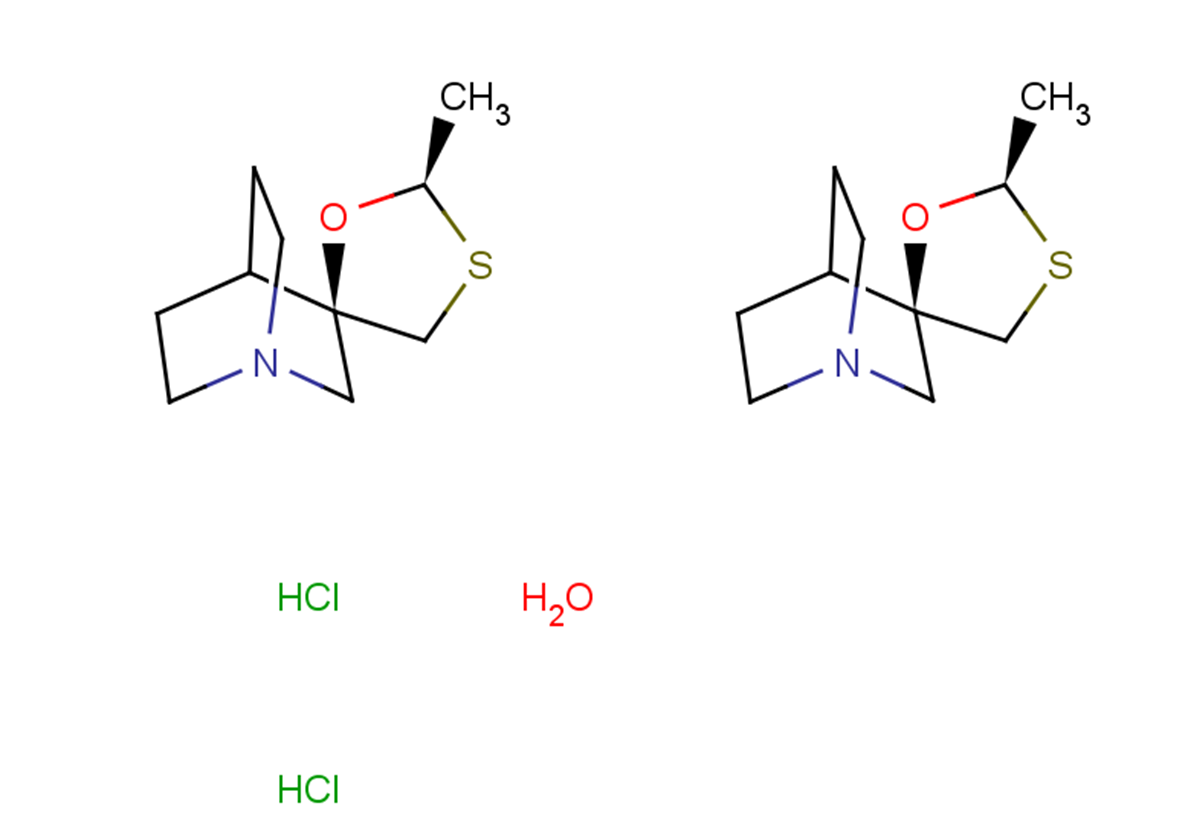购物车
全部删除  您的购物车当前为空
您的购物车当前为空
别名 (-)-SNI-2011, (-)-AF102B hydrochloride hemihydrate
(-)-Cevimeline hydrochloride hemihydrate ((-)-SNI-2011) 是一种新型mAChR 激动剂,是一种治疗干燥综合征口干症的候选治疗药物。

(-)-Cevimeline hydrochloride hemihydrate ((-)-SNI-2011) 是一种新型mAChR 激动剂,是一种治疗干燥综合征口干症的候选治疗药物。
| 规格 | 价格 | 库存 | 数量 |
|---|---|---|---|
| 25 mg | 待询 | 3-6月 | |
| 50 mg | 待询 | 3-6月 | |
| 100 mg | 待询 | 3-6月 |
| 产品描述 | Cevimeline hydrochloride hemihydrate ((-)-SNI-2011), a novel muscarinic receptor agonist, is being explored as a potential treatment for xerostomia in Sjogren's syndrome, exhibiting an IC50 value indicative of its affinity for mAChR. This compound's pharmacological effects on the gastrointestinal, urinary, and reproductive systems, alongside its impact on various tissues, were thoroughly examined in species including mice, rats, guinea pigs, rabbits, and dogs. The metabolic breakdown of (-)-SNI-2011 was studied in vitro using rat and dog liver microsomes to assess its biotransformation. Upon oral administration, peak plasma concentrations were reached within an hour in both rats and dogs, showcasing rapid absorption and a subsequent decrease in concentration with a half-life ranging from 0.4 to 1.1 hours. Bioavailability was noted at 50% in rats and 30% in dogs. Metabolic pathways highlighted significant species differences, with both S- and N-oxidized metabolites identified in rats, but only N-oxidized metabolites in dogs. Additionally, gender differences in pharmacokinetics were observed in rats but were absent in dogs. In vitro studies pinpointed the involvement of cytochrome P450 (CYP) and flavin-containing monooxygenase (FMO) in the metabolism of (-)-SNI-2011, specifically through sulfoxidation and N-oxidation processes, respectively. CYP2D and CYP3A were identified as the primary enzymes responsible for sulfoxidation in rat liver microsomes. |
| 别名 | (-)-SNI-2011, (-)-AF102B hydrochloride hemihydrate |
| 分子量 | 244.78 |
| 分子式 | C10H19ClNO1.5S |
| 密度 | 1.31g/cm3 |
| 存储 | Powder: -20°C for 3 years | In solvent: -80°C for 1 year | Shipping with blue ice/Shipping at ambient temperature. |
以上为“体内实验配液计算器”的使用方法举例,并不是具体某个化合物的推荐配制方式,请根据您的实验动物和给药方式选择适当的溶解方案。
对于不同动物的给药剂量换算,您也可以参考 更多